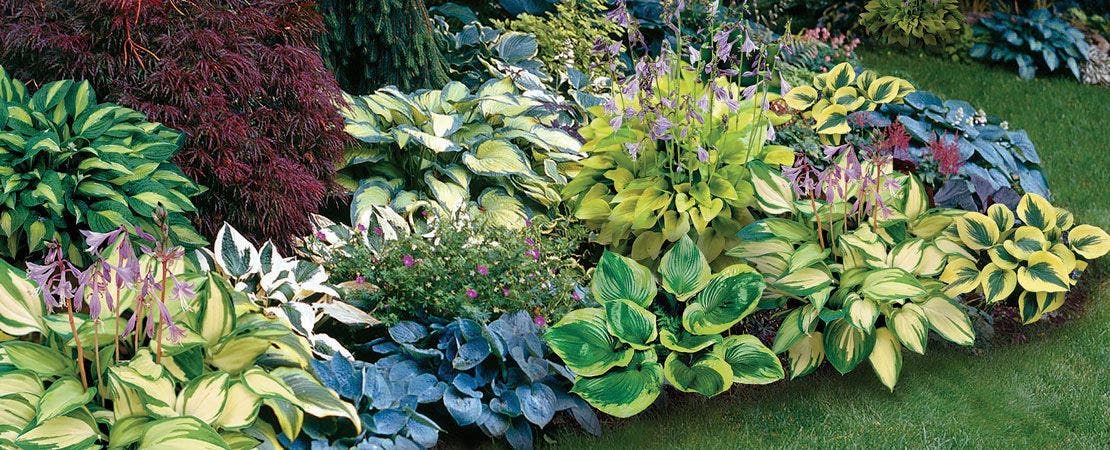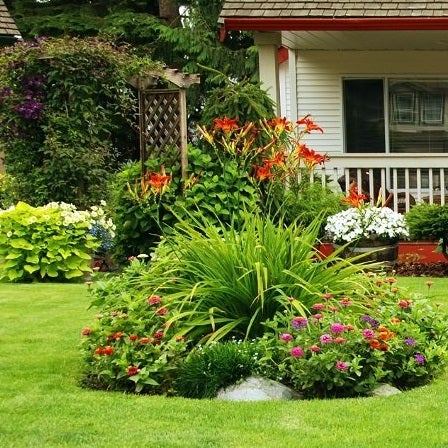Why are Plants Different Colors?
Plants in gardens and indoor spaces provide rich engaging colors and striking beauty to our lives. Have you ever wondered what causes plants to be different colors or where the color comes from in the first place? It is not exactly simple, and many plant lovers might not care. And yet, most people enjoy knowing why things are the way they are. More practically, knowing the scientific basis of plant colors can help you better manage them.
Leaf Colors
1. Chlorophyll
Plants are green because of chlorophyll. Almost everyone has heard of chlorophyll, probably since childhood. Chlorophyll is the chief pigment of photosynthesis, the process by which plants turn light into useable energy. Plants store this energy, animals eat the plants, and humans eat both plants and animals, giving us the energy to live. In fact, virtually all life on this planet depends on the chlorophyll in plants capturing sunlight. Have you thanked a green plant today? You should.
Pigments, like chlorophyll, are compounds that absorb light, often selectively. Plants are green because chlorophyll absorbs the light that hits it, especially red and blue light, but not the wavelengths we see as green. The green light bounces off the chlorophyll-containing plant and reaches our eyes. The plant looks green to us, because the other colors of light were absorbed and not reflected. To capture light for photosynthesis, leaves are packed with chlorophyll (packed into organs called chloroplasts), and so appear green.
Discover Wayside Gardens Plants with Foliage Interest
Most plants can have leaves from deep green to light green. This is a response to the intensity of sunlight reaching the leaf. In low light, the leaf bulks up on chlorophyll, in its chloroplasts, to capture as much light as possible, making deep green leaves. In higher light, fewer chloroplasts are needed for maximal sugar production because sugar production becomes limited by water, oxygen, or temperature, not light. In very intense light, the leaves may get so much heat and light energy that it damages them. Plants can respond by increasing other pigments, particularly red and red-brown anthocyanins (see below) in the plant equivalent of getting a protective suntan.
Plant adaptation to light intensity results in “sun leaves” and “shade leaves”, which are produced in sun or in shade, respectively. It is not the same leaf that does well in both but, rather, the plant has the ability to grow leaves with different densities of pigments. Usually, the level of chlorophyll and anthocyanin in a leaf is set when it is tiny and just starting to grow. So, while plants can adapt to different light regimes, you can seriously injure a plant by moving it suddenly from shade to sun, or vice versa, without giving it time to produce new leaves that fit the new light conditions.
2. Carotenoids
Chlorophyll is far from the only pigment in plants, just the most important and most abundant one. Carotenoids are the pigments that give plants, carrots for example (carotenoids are named after carrots) colors ranging from yellow to orange. They have many functions in plants, but especially as antioxidants, absorbing oxygen in the cell, because oxygen in the cell interferes with photosynthesis. They also expand the range of light captured. Carotenoids are important in the diet of many animals, but animals cannot synthesize them, so they must eat carotenoids.
3. Flavonoids
Flavonoids are the third major group of plant pigments. Like carotenoids they assist in photosynthesis by taking up oxygen and capturing a little more light. Flavonoids produce colors that range from red to blue.
Ordinary summer leaf colors are due to the large amount of chlorophyll in leaves. It keeps us from seeing the carotenoid and flavonoid pigments that are also in the leaves. During autumn, the leaves of deciduous trees change color because, in anticipation of winter cold, plants transport the chlorophyll to storage areas in the roots. In spring, it will be returned to the leaves. Without the dominant green-reflecting chlorophyll, we can see other pigments that are in the leaves. The yellows and reds were always there. In a very gentle fall, the plant will transport and store all the carotenoids and flavonoids, so there is little leaf color; all the leaves turn brown. The usual series of increasingly hard frosts catch the plant with chlorophyll removed but not carotenoids and flavonoids, resulting in bright fall colors. Species-specific colors are the result of the pigment make-up in the leaf, reds in maples, yellows in aspens, for example.
Discover Wayside Gardens Plants with Fall Interest
Leaf Patterns
Variegated leaves are usually green and white. The white areas are sections without chlorophyll or the photosynthetic apparatus, so are colorless. In some cultivars, carotenoids or flavonoids are expressed in the leaves where chlorophyll is missing, so you get yellow or orange variegation. Variegated leaves are unstable, since the areas without chlorophyll cannot provide food for the plant, while green leaves and stems, feeding the plant, grow faster. Variegated plants will slowly become green-leafed plants, if you don’t sometimes remove nonvariegated leaves.
Plants grown for dramatic, multicolored leaves, such as coleus, are the result of the complex interplay of several genes controlling pigments and their distribution, and the conditions under which the leaves are grown. As a broad generalization, strong indirect light will bring out the brightest reds and yellows because it minimizes the amount of chlorophyll needed.
Flower Colors
Flowers are a subset of leaves. That is a basic botanical concept; the leaves of the ancestors of our modern plants evolved into flowers. So, flowers began with same array of pigments as leaves, but evolved great differences. Flowers that stand out against green leaves attract more pollinators, so flowers are rarely green. (Most of the exceptions are wind-pollinated flowers because color is irrelevant to pollination by wind.) White flowers are pretty easily produced by a mutation that blocks pigment production; almost every plant has a variety with white flowers. In nature, yellows and oranges are produced by carotenoids, while reds, purples, and blues are produced by flavonoids. Both carotenoids and flavonoids have many subgroups of pigment molecules.
The chemical pathways that synthesize pigment are often long and complicated. A basic blue flavonoid called delphinidin (seen in delphiniums) has the chemical formula C15 H11O7, that is, it has 15 carbon molecules, 11 hydrogens and 7 oxygens. Furthermore, they are connected as a pair of six-carbon rings that share one carbon pair, with a third six-carbon ring linked to it by one carbon. Synthesizing that takes a series of chemical reactions that are quite different from those needed to create other pigments. The differences in pigment-synthesis pathways for carotenoids and flavonoids, and for specific types of each, are why often plant species and groups of species have many orange and yellow varieties, but few blues and purples; and vice versa. (Anthocyanins, frequently mentioned as flower colors, are flavonoids, as are the less common betacyanins).
A few plants, like hydrangeas, produce different colored flowers in response to different soil conditions, particularly acidity. Read more about hydrangea colors.
Breeders have worked hard to provide a wider array of flower colors, with considerable success. A plant in nature, depending on rain and whatever nutrients are in the soil, generally allocates very little energy to making colored flowers, a simple yellow blossom is fine. Horticulturalists, providing lots of water and nutrients, nurture mutants with two or more pathways producing pigments for the flower, and have consequently developed wonderful intense and novel shades. With genetic engineering, it is conceptually possible to move any pigment synthesis pathway into plants that lack them. For example, in 2004, in pursuit of a blue rose, the delphinidin pathway was transferred into a white rose. However, this rose is lavender. Research to expand flower colors continues but plant color production and expression is complex and progress, while steady, is slow.
Shop Flowering Plants from Wayside Gardens
By Kathy Keeler
About the Author: I was a professor of biology at the University of Nebraska-Lincoln for 31 years, retired to write and speak about plants as AWanderingBotanist.com. I love plants, for their colors and beautiful shapes and the curious underlying science.










